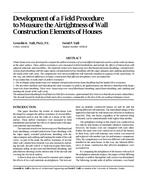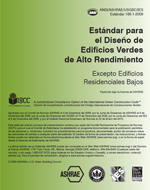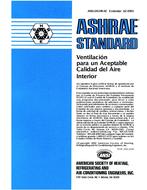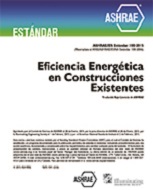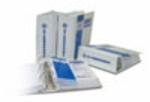Description
Whole-house tests were developed to compare the airflow resistance of several different materials used to seal the walls of a house at the outer surface. These airflow resistances were measured in field installations and include the effects of interactions with adjacent materials and assemblies. The materials tested were housewrap over fiberboard and foam sheathings, extruded polystyrene foam sheathing with the edges taped, extruded polystyrene sheathing with the edges untaped, and caulking and foaming the inside of the wall cavity. The comparisons were between different wall materials installed in sequence in the same house. In this way, any inherent differences in house construction that affected airtightness were accounted for. It was found that, in rank order of airflow resistance:
1. The technique using housewrap over untaped extruded polystyrene foam sheathing had the highest flow resistance.
2. The next three methods each had about the same resistance to airflow, all approximately one-third less than that of the house-wrapover foam sheathing. These were: housewrap over wood fiberboard sheathing, taped foam sheathing, and caulking and foaming the inside of the wall cavity.
The untaped foam sheathing by itself had very little flow resistance, approximately five times less than the previously ranked three. The drywall backed by kraft-faced batts had a flow resistance comparable to the best of the air-sealing techniques tested.
AUTHOR: Grenville K. Yuill, Ph.D., P.E., David P. Yuill
CITATION: Thermal Performance of the Exterior Envelopes of Buildings VII
KEYWORDS: December, Florida, 1998
YEAR: 1998
Citation: Thermal Performance of the Exterior Envelopes of Buildings VII
Product Details
- Published:
- 1998
- File Size:
- 1 file , 130 KB
- Product Code(s):
- D-8053
